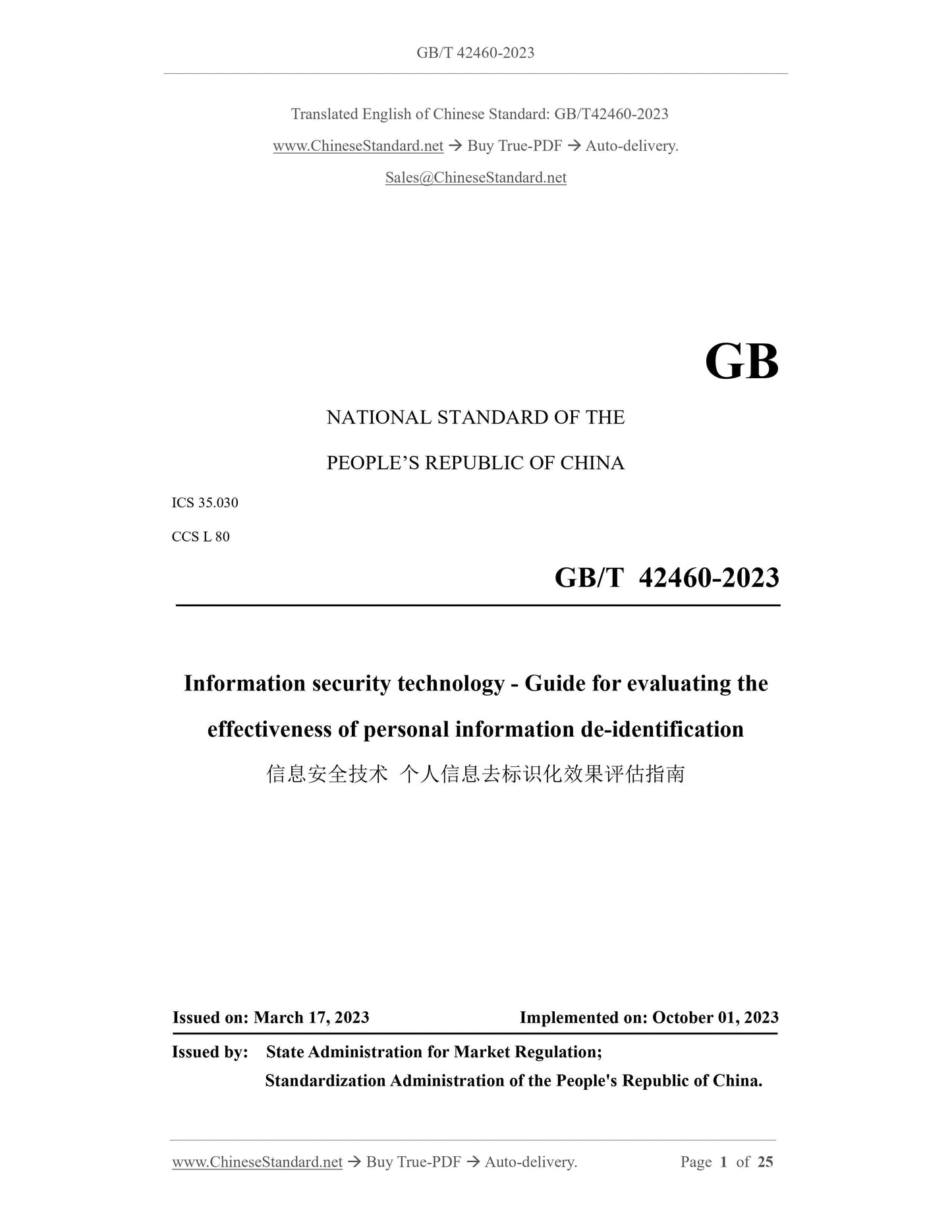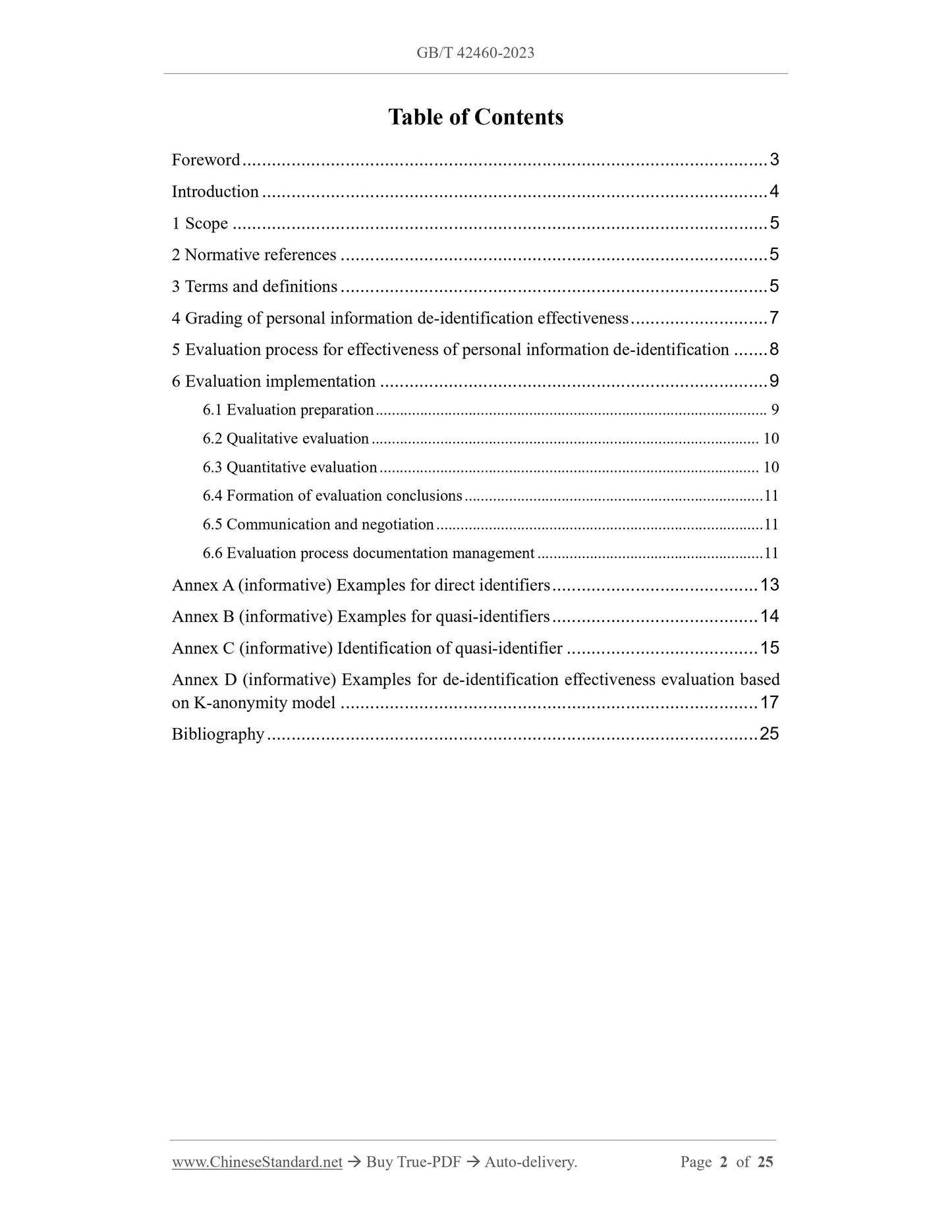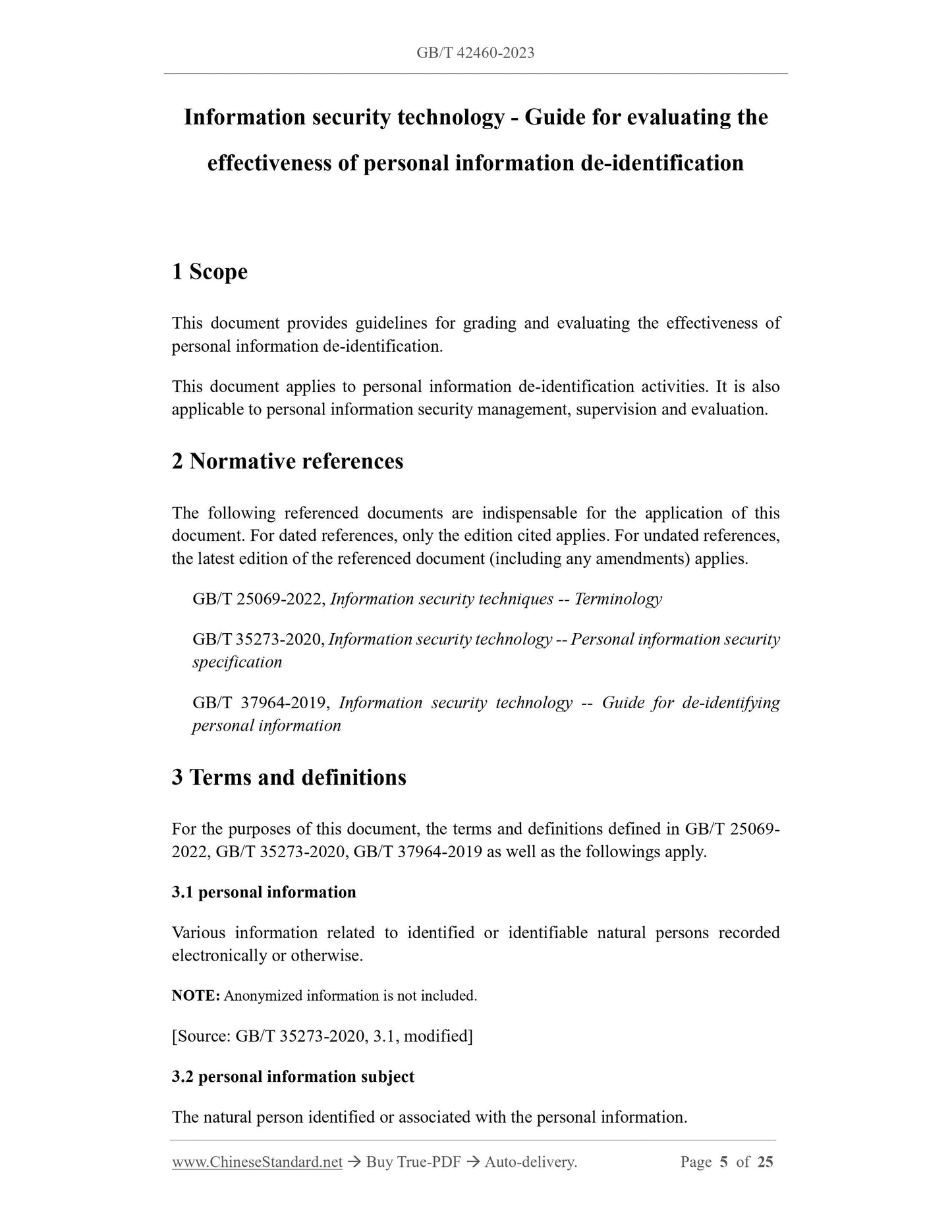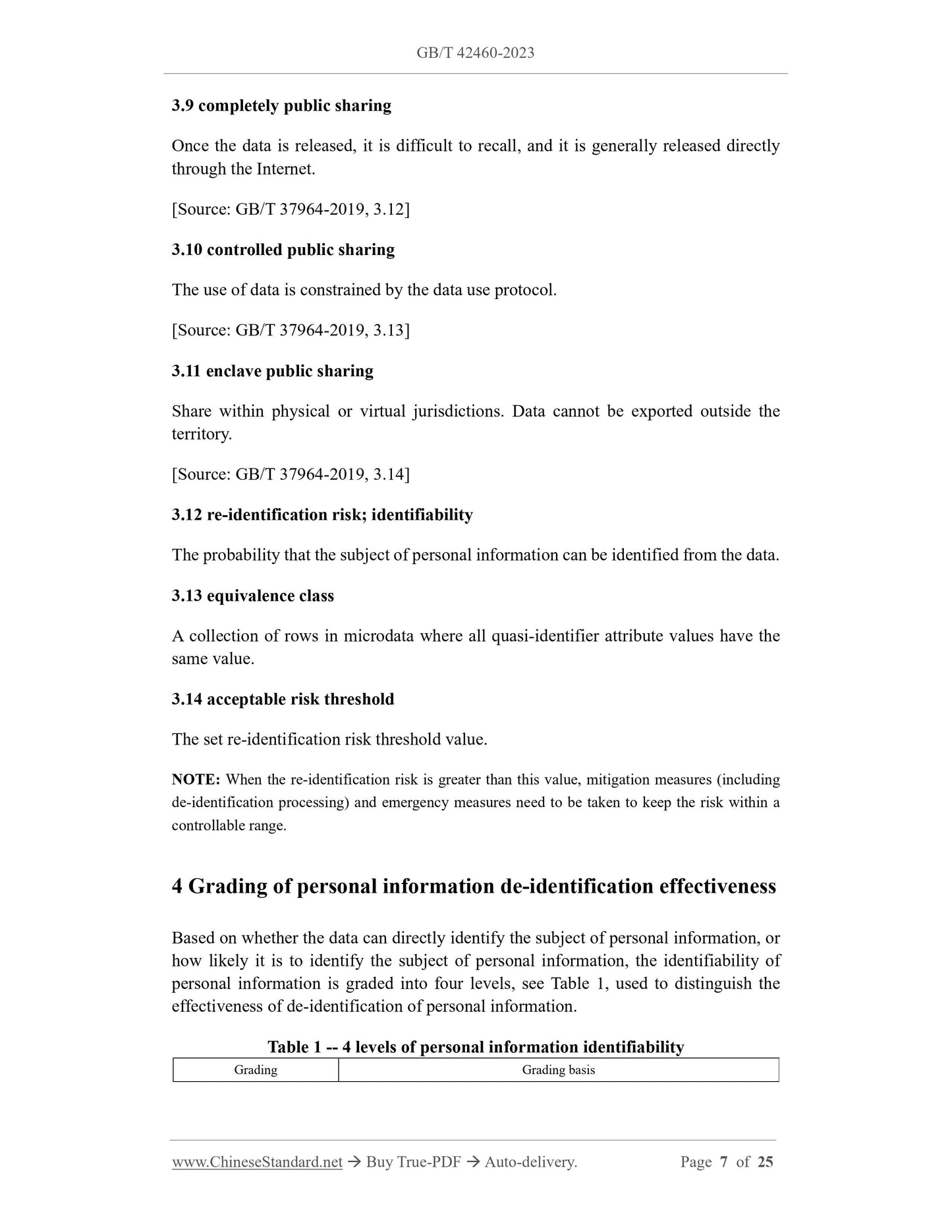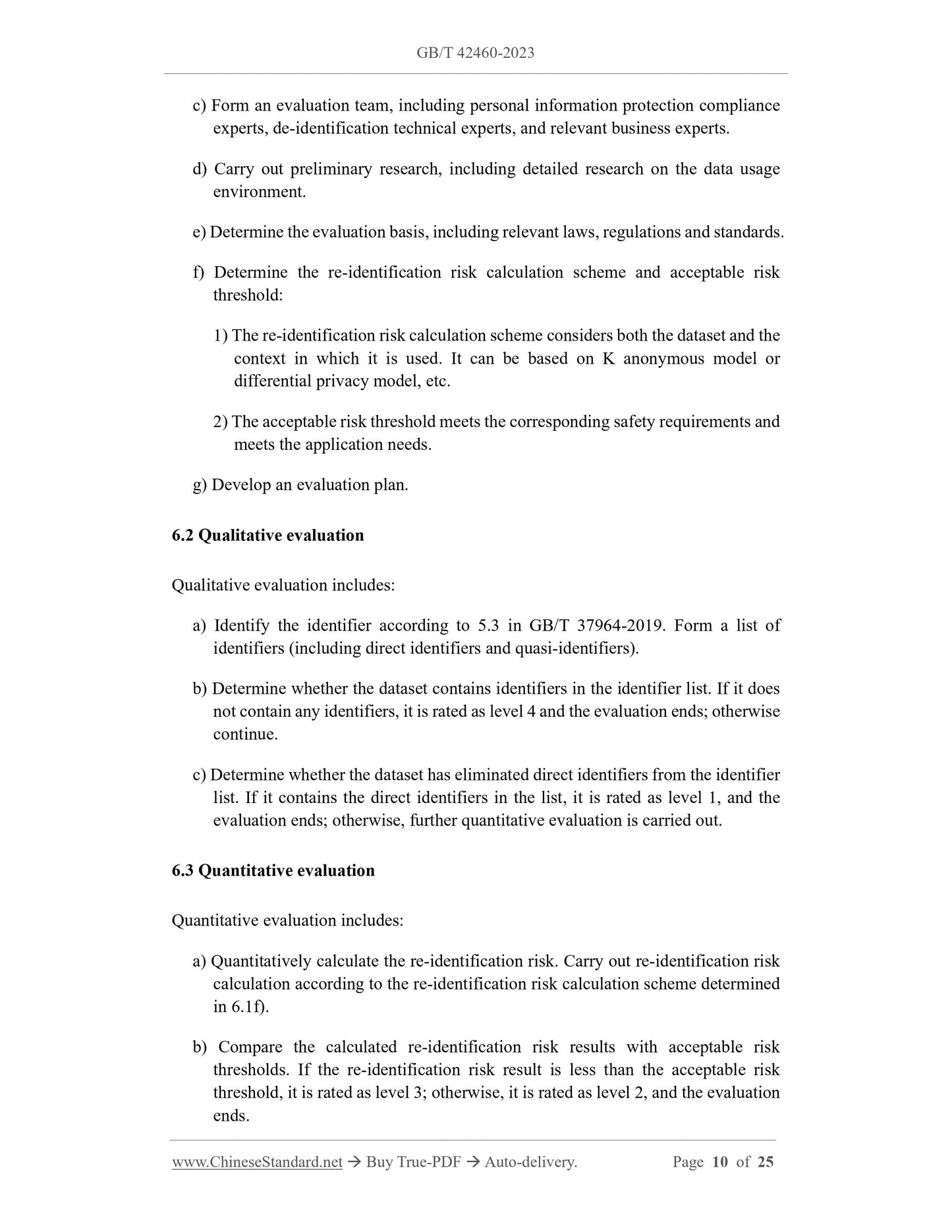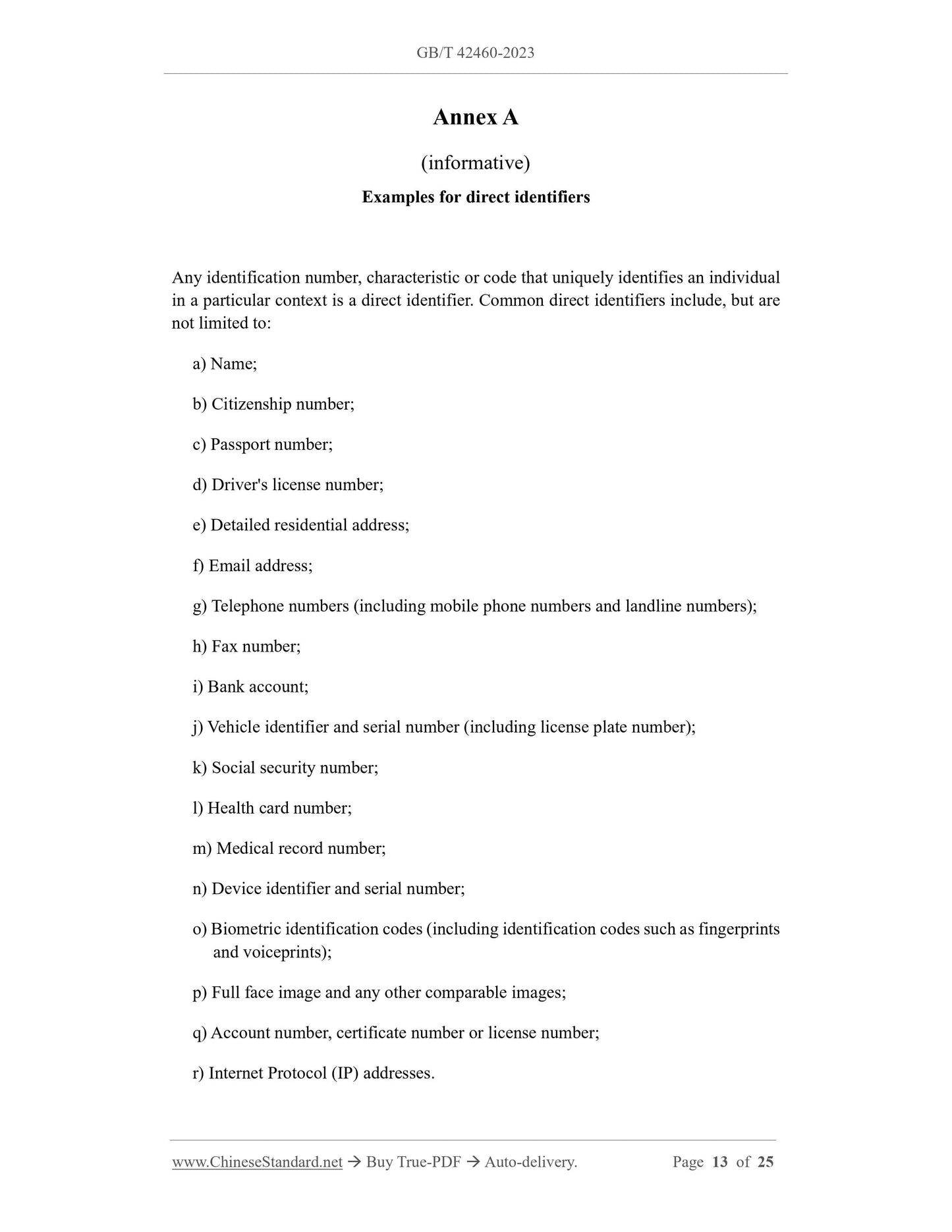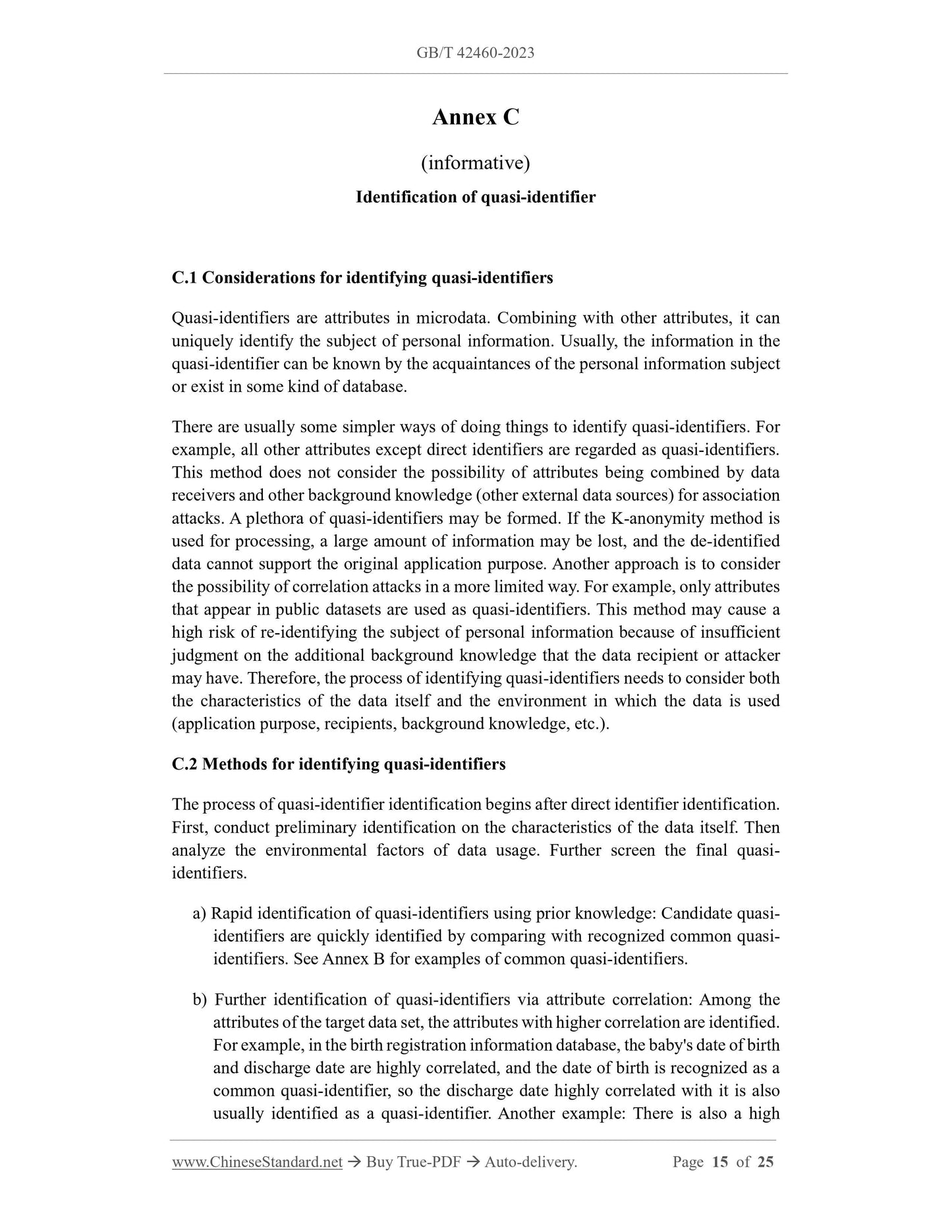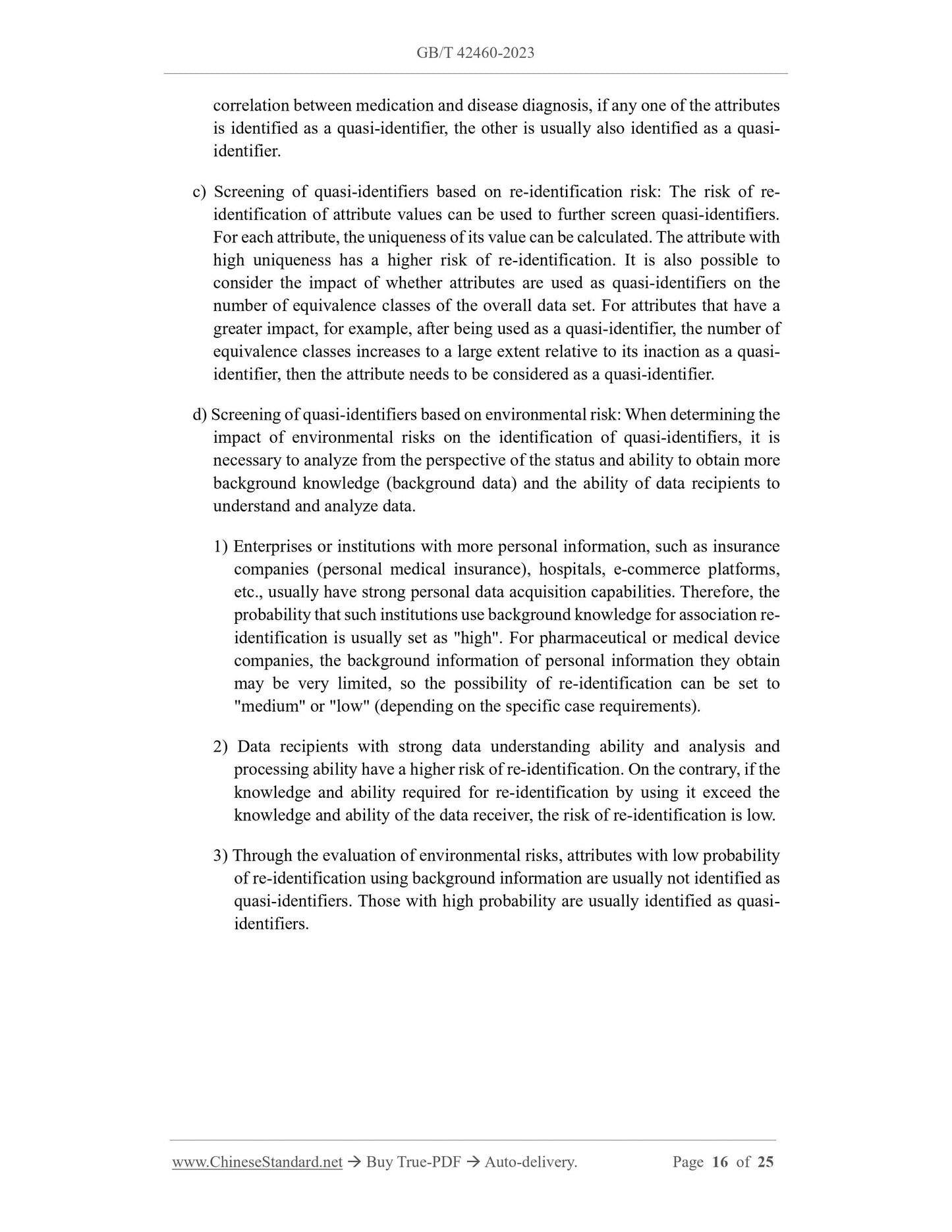1
/
of
9
www.ChineseStandard.us -- Field Test Asia Pte. Ltd.
GB/T 42460-2023 English PDF (GB/T42460-2023)
GB/T 42460-2023 English PDF (GB/T42460-2023)
Regular price
$290.00
Regular price
Sale price
$290.00
Unit price
/
per
Shipping calculated at checkout.
Couldn't load pickup availability
GB/T 42460-2023: Information security technology - Guide for evaluating the effectiveness of personal information de-identification
Delivery: 9 seconds. Download (and Email) true-PDF + Invoice.Get Quotation: Click GB/T 42460-2023 (Self-service in 1-minute)
Newer / historical versions: GB/T 42460-2023
Preview True-PDF
Scope
This document provides guidelines for grading and evaluating the effectiveness ofpersonal information de-identification.
This document applies to personal information de-identification activities. It is also
applicable to personal information security management, supervision and evaluation.
Basic Data
| Standard ID | GB/T 42460-2023 (GB/T42460-2023) |
| Description (Translated English) | Information security technology - Guide for evaluating the effectiveness of personal information de-identification |
| Sector / Industry | National Standard (Recommended) |
| Classification of Chinese Standard | L80 |
| Classification of International Standard | 35.030 |
| Word Count Estimation | 18,166 |
| Date of Issue | 2023-03-17 |
| Date of Implementation | 2023-10-01 |
| Issuing agency(ies) | State Administration for Market Regulation, China National Standardization Administration |
Share
